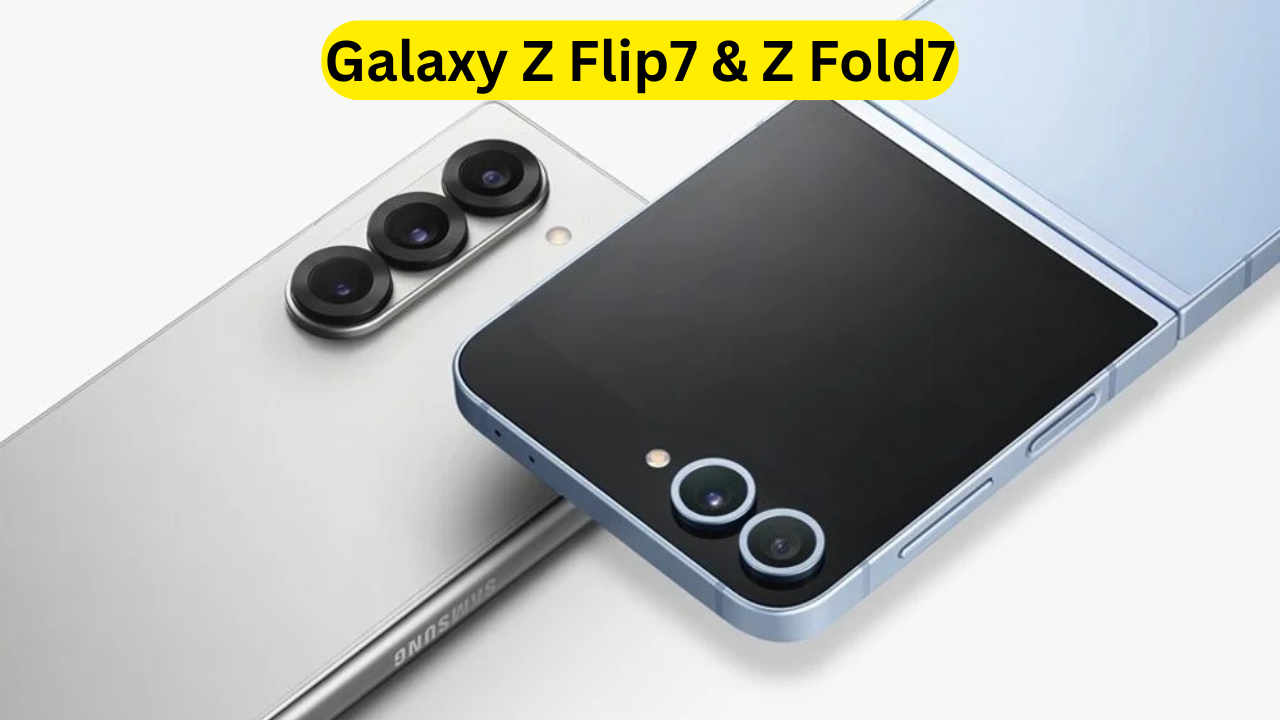Galaxy Z Flip7 & Z Fold7: In 2025, the foldable smartphone market has matured significantly, with competitors pushing the envelope in terms of design, performance, and especially battery life. Yet, in a surprising move, Samsung chose to equip its next-gen Galaxy Z Flip7 and Z Fold7 with the smallest batteries among 2025 foldables. For many fans and tech enthusiasts, this came as a disappointment, especially when battery longevity has long been the Achilles heel of the Galaxy Z series. Despite several generations of refinement, users have consistently cited short battery life as a major drawback in Samsung’s otherwise revolutionary foldables.
The launch of the Galaxy Z Flip7 and Z Fold7 was the perfect moment for Samsung to debut its rumored new battery technology—possibly using stacked battery design or advanced silicon-anode cells. These technologies promised denser energy capacity without increasing physical size, which is ideal for thin, compact foldable designs. Implementing them would have not only enhanced the user experience but also given Samsung a critical edge over rival brands like Huawei, Xiaomi, and Oppo, which are already advancing in battery innovations for foldables.
Instead, Samsung’s latest foldables retain modest battery upgrades, or in some cases, even smaller capacities compared to other 2025 competitors. This is a missed strategic opportunity at a time when consumers expect flagship devices—especially premium foldables—to be uncompromising in every aspect. With battery life being a make-or-break factor for many users, Samsung risks losing its dominance in the foldable segment if it continues to underdeliver in this area.
Samsung’s Battery Shortcomings
Why Battery Life Matters in Foldables
Foldable phones like the Z Flip and Z Fold are used not just as communication tools, but also as productivity hubs and media devices. Their expansive screens encourage multitasking, gaming, and content consumption—all of which are power-hungry activities. This makes battery life more crucial in foldables than in traditional phones.
Unfortunately, both the Galaxy Z Flip7 and Z Fold7 have batteries under 4,000mAh, while competitors like the Xiaomi Mix Fold 4 and Honor Magic V3 sport batteries over 5,000mAh. This significant gap has led to criticism of Samsung for not prioritizing one of the most user-demanded features.
What Could Have Been: Samsung’s New Battery Tech
Rumored Advances in Battery Innovation
Leaks and patents over the past year hinted that Samsung SDI was developing new battery tech, including:
- Stacked battery architecture – Similar to EV batteries, offering higher energy density.
- Silicon-anode materials – To replace graphite, allowing more energy to be stored in the same volume.
- Cooling improvements – To enable faster charging and better thermal management.
These innovations would have been ideal for the slim, compact bodies of the Z Flip7 and Z Fold7. However, they remain absent in the final product—raising questions about Samsung’s priorities and long-term vision.
Galaxy Z Flip7 & Z Fold7 Competitive Landscape

How Other Brands Are Advancing
In contrast, rival brands are pushing boundaries. For example:
- Huawei Mate X5 features a 5,060mAh battery with efficient heat dissipation.
- Xiaomi Mix Fold 4 supports 120W wired charging and lasts up to two days on a single charge.
- Honor Magic V3 uses a graphene-based battery with improved cycle life and compact form factor.
Samsung’s failure to respond with similar or better technology leaves the Z Flip7 and Fold7 lagging in a critical area, despite excelling in displays, performance, and software.
Consumer Impact and Market Reception
Battery as a Buying Decision
User feedback so far reflects mixed sentiments. While some appreciate the improved cameras and software upgrades, others feel let down by the battery capacities. With foldables commanding a premium price, users expect all-around excellence—including battery life that can last at least a full day of heavy usage.
This dissatisfaction could translate into lost sales or users switching to rival devices that better balance power and portability. Battery life is no longer just a technical spec—it’s a key factor in purchasing decisions.
Also Read: 2025 Mercedes-AMG CLE 53 Cabriolet Review: Luxury, Power, and Open-Top Thrills in the UK
Galaxy Z Flip7 & Z Fold7 Conclusion
Samsung had the perfect chance to leap ahead of its competition in 2025 by introducing new battery technologies in the Galaxy Z Flip7 and Z Fold7. These innovations could have addressed long-standing battery complaints and positioned Samsung as a true pioneer in foldable hardware. Instead, the company played it safe—perhaps too safe—with battery capacities that fall short of expectations.
As the foldable market heats up, Samsung can’t afford to overlook the importance of battery life any longer. With tech enthusiasts and mainstream users alike demanding more endurance from their devices, the pressure is on for the next Galaxy foldables to deliver more than just incremental upgrades. Until then, rivals may continue to close the gap—and potentially overtake the giant in this once-exclusive domain.
Galaxy Z Flip7 & Z Fold7 FAQs
1. Why is battery life still an issue in Samsung foldables?
Battery life remains a challenge due to the compact size and dual-screen nature of foldables. Samsung has prioritized slimness and design, which limits internal space for larger batteries.
2. What battery sizes do the Galaxy Z Flip7 and Z Fold7 have?
The Galaxy Z Flip7 reportedly comes with a 3,700mAh battery, while the Z Fold7 includes a 4,400mAh unit—both smaller than most 2025 foldables.
3. Were there any new battery technologies expected in the Z Flip7 and Z Fold7?
Yes, there were rumors of stacked batteries and silicon-anode materials being introduced, but Samsung did not implement these in the final models.
4. Which foldable phones have better battery life in 2025?
Devices like the Xiaomi Mix Fold 4, Huawei Mate X5, and Honor Magic V3 currently offer larger batteries and longer usage times compared to the Galaxy Z Flip7 and Fold7.

